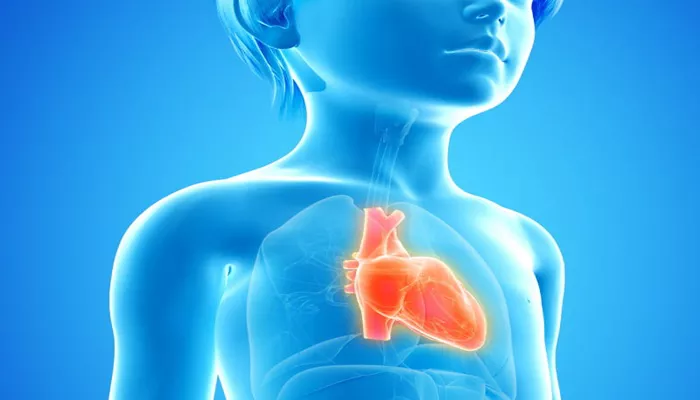Arrhythmia is a term that refers to an irregular heartbeat. In children, it can be alarming for parents and caregivers.
Understanding the causes of arrhythmia in children is essential for proper diagnosis and treatment. This article will explore various factors that contribute to arrhythmia in young patients.
Understanding Arrhythmia
Arrhythmias can manifest in different ways. Some children may have a heartbeat that is too fast, known as tachycardia, while others may have a heartbeat that is too slow, known as bradycardia. In some cases, the heartbeat may have an irregular rhythm. While occasional arrhythmias can be benign, persistent or severe arrhythmias may require medical attention.
Common Causes of Arrhythmia in Children
Several factors can lead to arrhythmias in children. Understanding these causes can help in managing the condition effectively.
1. Congenital Heart Defects
One of the leading causes of arrhythmias in children is congenital heart defects. These are structural problems with the heart that are present at birth. Some common defects include:
Atrial Septal Defect (ASD): This condition occurs when there is a hole in the wall that separates the heart’s two upper chambers. It can lead to increased blood flow in the heart and result in arrhythmias.
Ventricular Septal Defect (VSD): Similar to ASD, VSD involves a hole between the heart’s lower chambers. This can cause the heart to work harder and develop irregular rhythms.
Children with these defects are often monitored for arrhythmias, as the abnormal structure of the heart can disrupt the electrical signals that regulate heartbeat.
2. Electrolyte Imbalances
Electrolytes are minerals in the body that help regulate various functions, including heart rhythm. An imbalance of electrolytes can lead to arrhythmias. Common electrolytes include:
- Potassium
- Sodium
- Calcium
Causes of electrolyte imbalances in children can include dehydration, certain medications, and underlying health conditions. For instance, a child with vomiting or diarrhea may lose significant amounts of electrolytes, increasing the risk of arrhythmia.
3. Inherited Conditions
Some arrhythmias in children are linked to genetic disorders. These inherited conditions affect the heart’s electrical system. Notable examples include:
Long QT Syndrome: This condition affects the heart’s electrical activity, leading to an increased risk of life-threatening arrhythmias. It can be inherited from parents or occur spontaneously.
Brugada Syndrome: This genetic disorder can cause abnormal heart rhythms and is often diagnosed in childhood or early adulthood.
Families with a history of arrhythmias or sudden cardiac death should discuss screening for these conditions with a healthcare provider.
4. Myocarditis
Myocarditis is an inflammation of the heart muscle, often caused by a viral infection. It can lead to arrhythmias due to damage to the heart tissue. Symptoms may include:
- Chest pain
- Shortness of breath
- Fatigue
Children with myocarditis may require hospitalization and monitoring, as arrhythmias can develop rapidly.
5. Drug and Substance Use
Certain medications and recreational drugs can cause arrhythmias in children. Stimulants, such as caffeine and some over-the-counter medications, can lead to an increased heart rate. Additionally, illicit drug use, such as cocaine, can cause severe arrhythmias and should be a concern for parents and caregivers.
6. Physical Activity
Intense physical activity can sometimes trigger arrhythmias in children, especially in those with underlying heart conditions. Athletes should undergo screening for any heart issues before participating in competitive sports. Regular monitoring and medical advice can help manage the risk of arrhythmias during exercise.
7. Infections
Infections, particularly those affecting the respiratory system or the heart, can contribute to arrhythmias. Conditions like pneumonia or sepsis may lead to increased heart rates or irregular rhythms. Treatment of the underlying infection is crucial for restoring normal heart rhythm.
8. Stress and Anxiety
Emotional stress and anxiety can also play a role in triggering arrhythmias. Children facing stressful situations may experience increased heart rates or palpitations. It’s important for parents to recognize signs of stress and provide support or seek professional help if necessary.
Symptoms of Arrhythmia in Children
Recognizing the symptoms of arrhythmia is vital for timely intervention. Some common signs include:
Palpitations: A sensation of the heart racing or skipping beats.
Dizziness or Lightheadedness: Feeling faint or unsteady can indicate an arrhythmia.
Chest Pain: While chest pain can have various causes, it should always be evaluated, especially if it occurs alongside other symptoms.
Fatigue: Unusual tiredness may signal an underlying heart issue.
If any of these symptoms occur, it is essential to consult a healthcare professional for an accurate diagnosis.
Diagnosis of Arrhythmia
Diagnosing arrhythmia in children often involves several steps. A healthcare provider will begin with a thorough medical history and physical examination. Additional tests may include:
Electrocardiogram (ECG): This test measures the heart’s electrical activity and can identify arrhythmias.
Holter Monitor: A portable ECG device worn for 24-48 hours to capture heart rhythms over time.
Echocardiogram: An ultrasound of the heart to assess its structure and function.
Exercise Stress Test: Evaluates how the heart responds to physical activity.
These tests help determine the cause of arrhythmia and guide treatment options.
Conclusion
Arrhythmia in children can be caused by various factors, including congenital heart defects, electrolyte imbalances, inherited conditions, and infections. Recognizing the symptoms and seeking timely medical advice are crucial for effective management. With appropriate treatment and monitoring, many children with arrhythmias can lead healthy, active lives.
Parents and caregivers should work closely with healthcare providers to ensure their child’s heart health is prioritized.
Related topics:


